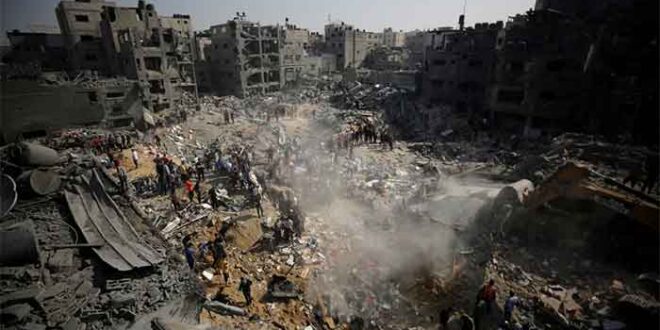As the massacre of Palestinian civilians continues a widening global outrage to Israeli atrocities is growing. Commentators, mostly as asides, have wondered why the areas being bombed and attacked are called camps.
The question about using the nomenclature “camps” arrived from two decidedly opposing sources. One source is a firmly pro-Israel website where the host, a Texas conservative, questioned the use of the word camp in describing Jabaliya (but inclusive of Shati and Nuseirat). He used a derogatory argument that the Palestinians are not in camps as they inhabit six story apartment blocks, with the insinuation that wealth and comfort, relatively speaking, did not allow the designation of the area as a camp.
Another website, of a former CIA and State Department, made a similar note while denouncing the Israeli onslaught of the camps, again a response apparently motivated by the slaughter in Jabaliya and elsewhere. He did not insinuate much other than to question the use of the word “camp” as a side comment.
At one time they were “camps”, sort of. After the 1947-48 ethnic cleansing of around 500 Palestinian villages and towns, there were areas for the refugees in which their housing was in tents. All of these camps have changed and become populated by a much larger Palestinian population housed in – from the pictorial evidence – concrete block houses and larger five and six story apartment blocks.
Or should we call them tenements? Even that is much too considerate of a word – more appropriately these areas should be considered ghettos. Making it all worse is that several of these ghettos are contained inside the world’s largest open air prison, the latter term itself becoming used as a descriptor for the long Israeli dominated Gaza enclave.
The word ghetto also does not describe the nastiness of the situation well enough. At least the U.S. ghettos have electricity, running water, fuel sources, and access to food. In Gaza, water is highly restricted and some of what is available is contaminated with sewage. In a desert climate, rainfall is limited. Electricity is limited to a few hours a day or not at all as what few fuel resources are available are required for the hospitals and the few available civic structures. As for food, the Israelis allowed only a minimal starvation ration to be available in Gaza.
With the current genocide and ethnic cleansing occurring in Gaza, none of that is available and the Palestinians live in fear – and defiance – of the Israeli military onslaught. The “camps”, the ghettos, are being reduced to piles of rubble, killing thousands of innocent men, women, and children, many buried in the rubble of their concrete tenements.
It is ironic that the Israelis are destroying the inhabitants of an area more similar to a ghetto than a camp: a ghetto surrounded by an entity, supposedly a democracy, supposedly a “moral” army, intent on slaughtering as many Palestinians as possible, or transferring them to Egypt.
Unfortunately, the actual tent camps may be renewed both within Gaza if a truce is ever called, and within Egypt as the Rafah crossing comes under greater and greater pressure for a safe refuge from the Israeli killing fields. Photographs have already shown refugees living int tents, some having moved five or six times just within the current attacks. Once again generations are struggling for survival in tents, more than likely soon to be more “camps” within Gaza and/or in Egypt and Jordan.
 Eurasia Press & News
Eurasia Press & News


